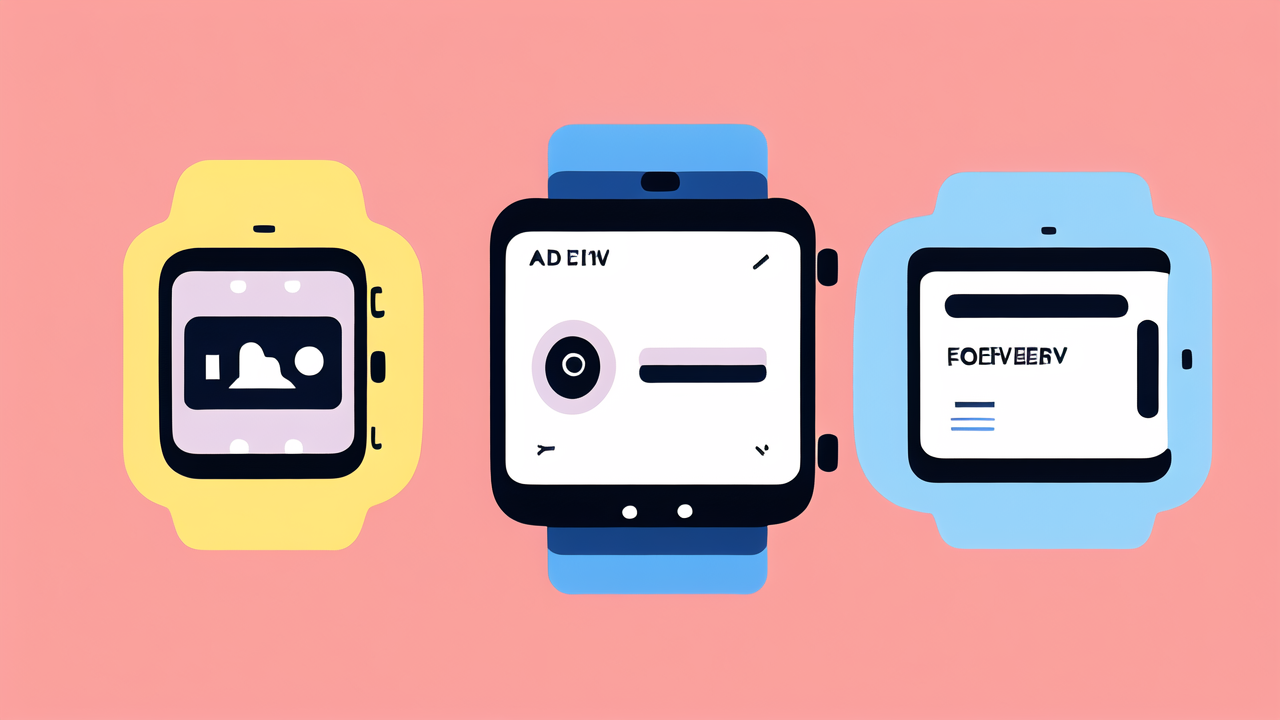Introduction to Smart Watches and Wearable Tech
The Evolution of Smart Watches
The evolution of smart watches represents a significant advancement in wearable technology. Starting as simple timepieces, they have transformed into comprehensive health and connectivity tools. Initially focusing on basic tasks like notifications and timekeeping, modern smart watches now offer a range of functionalities including fitness tracking, mobile payments, and even remote healthcare monitoring. Each generation sees improvements in design, battery life, and the integration of advanced sensors to better serve users' health and lifestyle needs. As technology progresses, so too does the capability of these wearable devices, paving the way for further innovations in personal tech.

Key Features of Pulse Watches
Pulse watches, a significant subcategory of smart watches, boast a variety of features tailored to modern users. These devices primarily offer continuous heart rate monitoring, which is essential for both fitness enthusiasts and health-conscious individuals. Additionally, many pulse watches come equipped with step counting, calorie expenditure tracking, and detailed exercise analytics. A distinctive feature of these watches is their ability to provide notifications for abnormal heart rates, potentially alerting users to health issues before they become severe. Enhanced connectivity features allow synchronization with various health apps, ensuring a holistic view of one's health data.
Major Players in the U.S. Smart Watch Market
Apple Watch and Its Dominance
The dominance of Apple Watch in the U.S. smart watch market is evident from its extensive user base and consistent innovation. Apple's integration of health-focused features with seamless connectivity across devices gives it a competitive edge. Models like the Apple Watch Series 7 and newer iterations continue to set benchmarks in terms of functionality and style. This dominance is further bolstered by Apple’s strong ecosystem, which ensures that users often stay within the brand for all their tech needs. As a leader, Apple sets trends that other brands strive to follow, reinforcing its position at the top of the market.
Up-and-Coming Brands and Models
While Apple continues to lead in the U.S. smart watch market, several emerging brands are making significant inroads. Brands like Samsung Galaxy Watch and Fitbit are expanding their market presence with innovative features tailored to consumer needs. Samsung, for instance, has excelled with its integrated health features, while Fitbit's strength lies in comprehensive activity tracking. Additionally, newer entrants such as Garmin and Fossil are gaining traction by offering niche functionalities like advanced GPS for outdoor enthusiasts and stylish designs that appeal to fashion-conscious consumers. These up-and-coming brands are not only diversifying the market but also pushing the boundaries of what smart watches can offer in terms of personal health management and connectivity.
Health and Fitness Tracking Capabilities
Monitoring Heart Rate and Activity
Monitoring heart rate and physical activity is one of the advanced features offered by smart watches, turning them into indispensable tools for health and fitness enthusiasts. These watches provide real-time data that help users to track their heart rate during various activities, such as walking, running, and more intense workouts. This capability allows individuals to optimize their sessions according to their fitness goals and heart rate zones. Moreover, many of these devices come equipped with alerts that notify the wearer if their heart rate exceeds or drops below pre-set limits, enabling more precise and safe workout routines. By integrating this feature, smart watches serve not just as a piece of technology, but as a personal health advisor that assists in maintaining or improving overall cardiovascular fitness.
Sleep Tracking and Stress Management
Modern pulse watches play a pivotal role in sleep tracking and stress management, crucial for maintaining overall health and wellness. These devices use advanced sensors to monitor the quality and duration of sleep, identifying patterns that may suggest restlessness or interruptions. Stress management features often include guided breathing exercises and variability in heart rate monitoring to help users manage daily stress effectively. Collectively, these functionalities make pulse watches invaluable tools for individuals looking to enhance their mental and physical health.
Technological Innovations in Smart Watches
Advancements in Battery Life and Display
Recent advancements in smart watch technology have notably improved battery life and display features. Manufacturers now utilize cutting-edge battery materials and more efficient power management software, allowing some models to last multiple days on a single charge. As for displays, the focus has been on producing sharper, more vibrant screens that remain easily legible in various lighting conditions, including direct sunlight. These enhancements have significantly elevated the user experience, making smart watches more appealing for both daily use and specific applications like outdoor sports and expeditions.
Integration of AI and Machine Learning
The integration of AI and machine learning in smart watches is remodeling how we interact with technology. These advanced technologies enable smart watches to learn from user behavior and provide customized assistance. Functions such as predictive text in messaging, exercise recommendations based on past activities, and health alerts tailored to personal medical histories exemplify this integration. AI also enhances the accuracy of sensors for heart rate monitoring and sleep tracking, making these devices indispensable companions for health and lifestyle management. As AI and machine learning technologies evolve, we can expect even more personalized and efficient features in future smart watch models.
Consumer Trends in Smart Watch Purchasing
Demographics of Smart Watch Users
The demographics of smart watch users in the USA illustrate a broad spectrum, spanning various age groups and lifestyles. Initially dominated by younger tech enthusiasts and fitness aficionados, usage has now expanded substantially. Recent trends show a notable adoption among seniors, driven by health monitoring features like pulse rate tracking. Additionally, professionals across sectors are using smart watches due to their seamless integration with daily business operations. Gender-wise, the adoption rate is fairly equal among males and females, each attracted by different features such as design and functionality respectively.
Preferences in Design and Functionality
When it comes to purchasing smart watches, consumers showcase diverse preferences in both design and functionality. Aesthetic appeal remains a significant factor, with buyers often opting for sleek, stylish designs that complement personal style. However, functionality is equally crucial. Consumers seek watches that offer extensive features ranging from fitness tracking and health monitoring to seamless integration with their smartphones. Additionally, the ability to customize interfaces and the availability of various apps are also highly valued. These preferences indicate a trend where style meets practicality, as users demand both form and substantial functionality from their smart watches.
Smart Watches in Healthcare
Role in Remote Patient Monitoring
Smart watches have increasingly become vital tools in remote patient monitoring, revolutionizing how healthcare is delivered. These devices continuously track various health metrics such as heart rate, blood oxygen levels, and physical activity, allowing physicians to monitor patients from afar. This capability is particularly beneficial for managing chronic conditions or for elderly patients who require frequent monitoring. It also reduces the need for frequent hospital visits, which can be costly and time-consuming. By enabling real-time data transmission to healthcare providers, smart watches support timely medical interventions, ultimately improving patient outcomes.
Data Privacy and Security Concerns
In the landscape of smart watches used in healthcare, data privacy and security stand out as pivotal concerns.
As these devices capture sensitive health data, including heart rates, sleep patterns, and sometimes even GPS locations, ensuring that this information remains secure is crucial. It is essential for manufacturers to incorporate robust encryption methods and secure data storage solutions to protect against unauthorized access and data breaches.
Moreover, users need clarity on how their data is managed and shared. Privacy policies that explain data sharing with third parties, especially insurance companies and employers, must be transparent and easily accessible. This transparency helps in gaining the trust of users, making them more comfortable with the continuous use of their smart watches in managing their health.
Challenges Facing the Smart Watch Industry
Competition with Traditional Timepieces
Despite the technological allure of smart watches, they face significant competition from traditional timepieces. Many consumers still prefer the classic elegance and simplicity offered by conventional watches. These traditional timepieces are often viewed as luxury items or fashion statements that maintain their value over time. Contrarily, smart watches are seen as gadgets that could become quickly outdated due to rapid advancements in technology. This dichotomy presents a challenge for smart watch manufacturers who must innovate not just technically, but also in design and marketing to appeal to a broader audience, bridging the gap between fashion and functionality.
Overcoming Technological Obstacles
Despite their popularity, smart watches face several technological obstacles that continue to challenge manufacturers. One of the primary hurdles is battery life, as users seek devices that can last longer without needing frequent recharges. Another significant challenge is data accuracy, particularly in health-tracking features. Smart watches must consistently provide precise and reliable data to gain trust from users. Integrating advanced technology while ensuring user-friendliness and maintaining an aesthetic appeal also poses a difficulty. Efforts to streamline software updates and improve interoperability between different technological ecosystems are crucial for enhancing user experience. Addressing these challenges head-on is essential for the sustained growth and evolution of smart watches in the competitive tech market.
Conclusion
Future Outlook on Smart Watches
Looking ahead, the future of smart watches appears to be exceptionally promising. As technology continues to advance, we can expect to see even more personalized features and enhanced connectivity options. The growing emphasis on health and wellness is likely to drive further innovations in biometric monitoring, allowing users to track more than just their heart rates or steps but also other crucial health markers. Additionally, the integration of AI and machine learning will likely make smart watches more intuitive, providing users with insights and suggestions tailored specifically to their lifestyles and health needs. Consumer demand for devices that blend style with functionality is expected to push manufacturers to design sleeker, more style-oriented models. Overall, smart watches are poised to become an even more indispensable part of our daily lives, transforming not just how we stay connected, but also how we manage our health and wellbeing.




Leave a comment
This site is protected by hCaptcha and the hCaptcha Privacy Policy and Terms of Service apply.